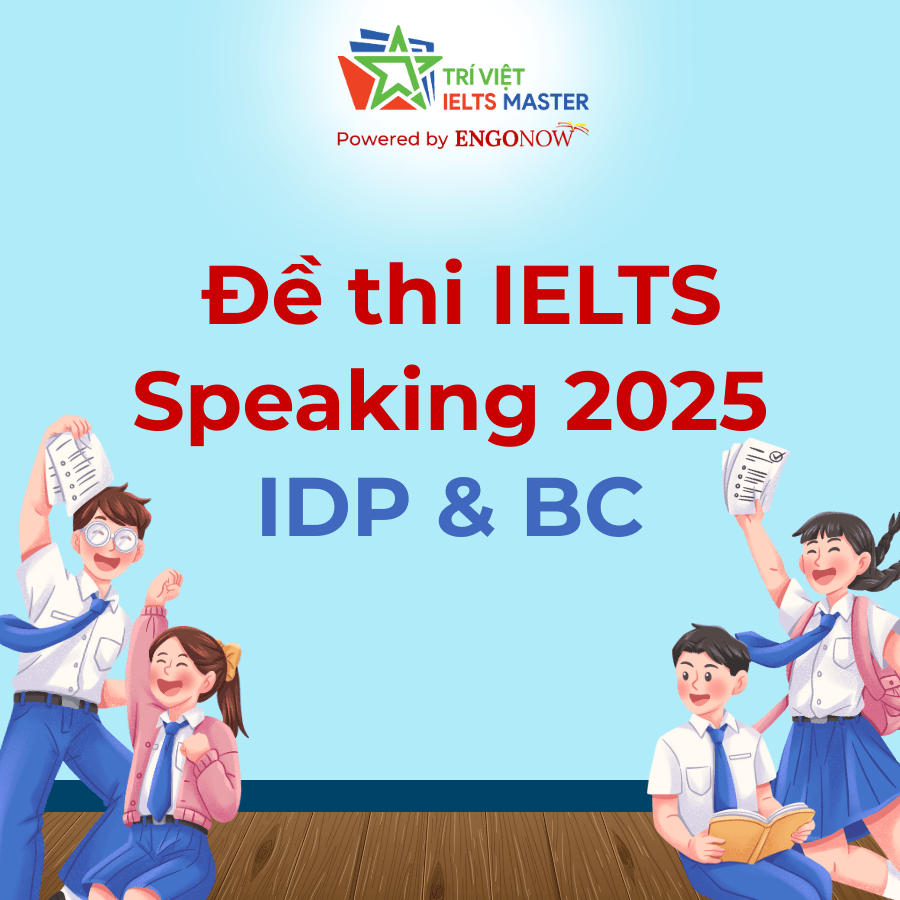Nowadays, children find it difficult to concentrate or pay attention in school. What are the causes of this problem? What solutions can be suggested?
Sample:
In recent years, many educators have expressed concern that students find it increasingly difficult to maintain concentration in the classroom. This essay will examine the main reasons behind this trend and suggest several ways to address it.
There are two primary factors that explain why children’s attention in school is waning. The first is the widespread presence of digital technology. In Vietnam, for example, it is common to see young learners spending hours each day on smartphones or tablets, engaging with short videos or online games. The constant stimulation from these activities makes classroom learning appear comparatively slow, reducing students’ willingness to focus on lessons. A second reason lies in the heavy academic load placed on schoolchildren. With the growing competition for entrance exams, many parents enrol their children in extra classes after school. This intense schedule often leaves them exhausted and anxious, and such mental states inevitably undermine their ability to stay attentive during lessons.
A number of practical measures can be taken to help students overcome these difficulties. One effective step is to integrate digital literacy into the curriculum, teaching children how to use technology responsibly and limiting exposure to distracting content. Teachers could, for instance, design short interactive tasks using tablets so that technology becomes a support for learning rather than a source of disruption. Another solution is to reform assessment practices by reducing reliance on rote-based examinations and adopting more balanced methods of evaluation. Recent trials of competency-based assessment in several Vietnamese provinces have shown that this approach encourages creativity and deeper engagement with learning. Finally, schools can introduce well-being programs such as mindfulness sessions, where children practise simple breathing exercises or relaxation techniques, helping them to manage stress and improve concentration.
· In conclusion, children’s declining ability to concentrate is largely the result of digital distractions and academic overload. However, by promoting healthy use of technology, rethinking evaluation systems, and supporting students’ mental well-being, schools can create an environment in which learners are better able to focus and succeed academically.
PHÂN TÍCH BÀI LUẬN IELTS TASK 2
Đề bài:
Children today find it difficult to concentrate on or to pay attention to school. What are the reasons? How can we solve this problem?
Bài luận mẫu:
(Đã được bạn cung cấp trong phần dữ liệu đầu vào, gồm 4 đoạn: mở bài – nguyên nhân – giải pháp – kết luận).
1) Phân tích đề bài & cấu trúc tổng quan
- Chủ đề: Education (giáo dục), Psychology/Child development (tâm lý – sự phát triển của trẻ), Technology (công nghệ).
- Dạng bài: Problem-Solution (nêu nguyên nhân → đưa ra giải pháp).
- Quan điểm/Hướng tiếp cận: Bài mẫu giữ lập trường trung lập, khách quan. Tác giả phân tích hai nguyên nhân chính (công nghệ và áp lực học tập) và đưa ra nhiều giải pháp (quản lý công nghệ, cải cách đánh giá, chương trình hỗ trợ tâm lý).
- Cấu trúc bài mẫu:
- Mở bài (1 đoạn, 2 câu): Paraphrase đề + giới thiệu hướng đi (phân tích nguyên nhân và giải pháp).
- Thân bài 1 (nguyên nhân): 2 ý chính – công nghệ và áp lực học tập, mỗi ý có ví dụ cụ thể.
- Thân bài 2 (giải pháp): 3 giải pháp thực tiễn, có dẫn chứng từ thực tế giáo dục Việt Nam.
- Kết bài: Tóm tắt nguyên nhân & khẳng định giải pháp có thể cải thiện.
2) Phân tích chi tiết từng đoạn
Mở bài:
- Câu chủ đề: “In recent years, many educators have expressed concern…” → nêu bối cảnh và paraphrase đề.
- Phát triển: Giới thiệu phạm vi: “examine reasons” + “suggest ways”.
- Hiệu quả: Ngắn gọn, rõ ràng, thể hiện đúng dạng Problem-Solution.
Thân bài 1 – Nguyên nhân:
- Topic Sentence: “There are two primary factors…” → báo hiệu rõ ràng có 2 lý do.
- Ý bổ trợ:
- Công nghệ số → trẻ quen với kích thích nhanh, mất hứng thú với lớp học.
- Áp lực học tập & thi cử → mệt mỏi, lo âu, khó tập trung.
- Ví dụ: Việt Nam, học sinh dùng smartphone & học thêm nhiều giờ. → Ví dụ thực tiễn, tăng tính thuyết phục.
Thân bài 2 – Giải pháp:
- Topic Sentence: “A number of practical measures can be taken…” → mở hướng giải pháp.
- Ý bổ trợ:
- Giáo dục công nghệ số có trách nhiệm.
- Cải cách đánh giá (competency-based).
- Chăm sóc sức khỏe tinh thần (mindfulness).
- Ví dụ: “Recent trials in Vietnamese provinces…” → dẫn chứng cụ thể, tăng độ tin cậy.
- Hiệu quả: Giải pháp đa chiều (công nghệ – hệ thống – tâm lý), thể hiện tư duy toàn diện.
Kết bài:
- Câu chủ đề: “In conclusion, children’s declining ability…” → tóm tắt nguyên nhân.
- Ý phát triển: Nhấn mạnh ba nhóm giải pháp.
- Hiệu quả: Rõ ràng, mạch lạc, tránh lặp từ, kết nối tự nhiên.
3) Phân tích Từ vựng (Lexical Resource) nổi bật (Band 7+)
- “maintain concentration in the classroom” – collocation học thuật, chính xác cho bối cảnh.
- “waning attention” – từ vựng giàu hình ảnh, thay thế hiệu quả cho “declining”.
- “constant stimulation” – collocation miêu tả sinh động tác động từ công nghệ.
- “academic load / intense schedule” – collocation chính xác, thể hiện tính học thuật.
- “integrate digital literacy into the curriculum” – cụm từ hàn lâm, giải pháp thực tế.
- “competency-based assessment” – thuật ngữ giáo dục hiện đại, nâng cao tính học thuật.
- “well-being programs / mindfulness sessions” – cụm từ chuyên biệt, diễn đạt giải pháp tâm lý.
4) Phân tích Ngữ pháp (Grammatical Range & Accuracy)
- Câu phức (complex sentences):
- “With the growing competition for entrance exams, many parents enrol their children…” (mệnh đề trạng ngữ chỉ nguyên nhân).
- Câu bị động:
- “One effective step is to integrate digital literacy into the curriculum…” (chuyển hướng từ hành động sang giải pháp).
- Mệnh đề quan hệ:
- “Teachers could, for instance, design short interactive tasks using tablets so that technology becomes…”
- “Teachers could, for instance, design short interactive tasks using tablets so that technology becomes…”
- Câu điều kiện/giả định:
- “…so that technology becomes a support for learning rather than a source of disruption.”
- Liên kết (cohesive devices):
- Nguyên nhân: “The first… A second reason…”
- Giải pháp: “One effective step… Another solution… Finally…” → rõ ràng, có trình tự.
- Mạch lạc (coherence): Ý được triển khai theo trục logic: nguyên nhân → hệ quả → giải pháp → lợi ích.
5) Tổng kết & Ghi chú cho người học (Key Takeaways)
Chia giải pháp thành nhiều cấp độ (công nghệ – hệ thống – cá nhân) để bài luận có chiều sâu và toàn diện.
Ghi chú học tập:
Khi viết dạng Problem-Solution, hãy luôn giới thiệu số lượng nguyên nhân và giải pháp ngay từ đầu để người đọc dễ theo dõi.
Sử dụng collocations học thuật theo chủ đề (ví dụ: “academic overload”, “digital distraction”, “assessment reform”) để tăng band Lexical Resource.
Xem thêm: [WRITING – SONG NGỮ] BÀI MẪU ĐỀ THI THẬT IELTS WRITING TASK 2 – CULTURE








